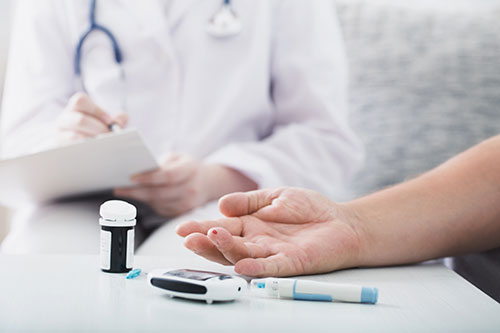Diabetes My Experience THEN and NOW
Recalling my clinical practice in the late 90s at a government general hospital makes me think of how revolutionized diabetes management has become. We used to treat patients with only random blood sugars; asking for a post prandial sugar was futile most of the time as a majority of the patients won’t turn up citing loss of a day’s work. Our treatment options were also limited in comparison with today’s world. We had to choose between two classes of oral drugs and a couple of insulin options whatever be the patient’s state. Stories from my professors were torrid with urine glucose test being the sole investigation and with miniscule treatment options.

On a personal note, for me the real game changer in the management of diabetes was the wide spread availability of HbA1c and the UK Prospective Diabetes Study (UKPDS) trial in early to mid-2000s. It made us more focused on our goals and to aggressively treat the number rather the patient’s symptoms alone. The widespread usage of well calibrated glucometers and continuous glucose monitoring devices has further helped in achieving near normal euglycemia.
The first decade of the new millennium saw the launch of many new drugs and the wide spread availability of inexpensive biguanide (metformin) with different types of sulphonylureas. We now have nine different oral diabetic agents to not only control the blood sugars but also to take care of different vital organs like heart, kidney, etc. and to reduce weight. The recombinant DNA technology revolutionized diabetes management by producing different types of insulin on a massive scale within a short period of time. We have leapfrogged many barriers in diabetes therapy from having only two types of insulin in the past to having a bigger armamentarium of ultrarapid acting insulin to take care of meal time surge and long-acting basal insulin for 24-hour control with less chance of hypoglycemia. Rapid changes haven’t only happened with insulin as such but also in the insulin delivery system. We have evolved from insulin administration via vials and syringes to insulin pen. The more recently developed smart insulin pens allow for tracking of insulin dosing, and integration with smartphone applications to provide reminders, integrate with blood glucose data and provide dosing recommendations. Arguably, the most impactful technology-driven advances in insulin delivery have revolved around the technology of continuous subcutaneous insulin infusion using insulin pumps.
There is a massive reduction in diabetes related morbidity now compared to the initial part of my career. I see only very few patients with diabetes related secondary infection, leg ulcers, cachexia, etc. compared to the earlier days. There is a significant improvement in patient education and involvement of patients in the treatment of diabetes. From using fixed insulin regimens for any level of sugar in between the doctor visits to asking the patients to tailor their own insulin requirement based on SMBG (self-monitoring of blood glucose), this is possible today only with patient education and by actively involving them in treating the disease.
Diabetes remains a complex and complicated disease. However, today we are equipped to tailor treatments and combinations designed to help the patients with diabetes to be on target. Precision medicine is the way forward.

Prof. Dr. S. Sivram Kannan
MD (Gen. Med). F.C, Diab, FRCP (Glas)
Clinical Lead & Chief Consultant Physician
Department of Internal Medicine & Diabetology
Kauvery Hospital Chennai

